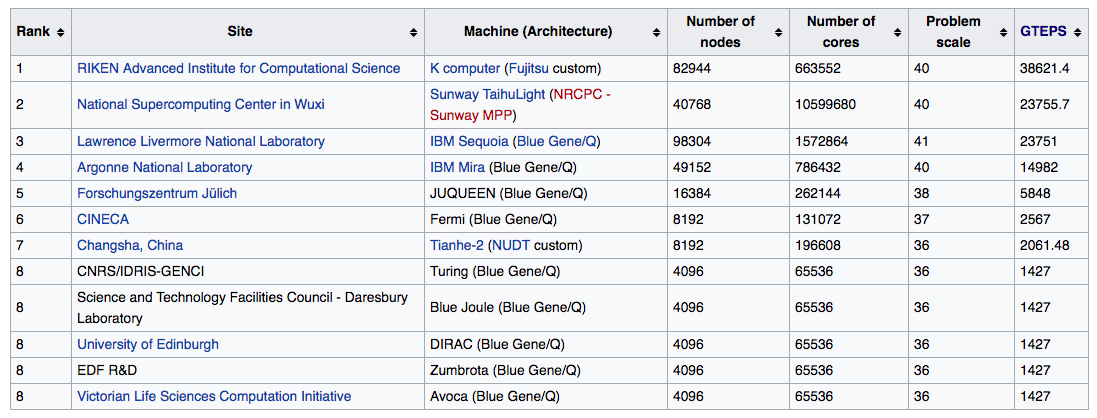The history of neuroscience in general, and myelination in particular, is replete with comparisons between brains and computers.
For example, the first suggested function of myelin in the 1850s as an insulator of electricity was made by analogy to electric wires, which had just recently been developed.
In today’s high performance computers (“supercomputers”), one of the big bottlenecks in computer processing speed is communication between processors and memory units.
For example, one measure of computer communication speed is traversed edges per second (TEPS). This quantifies the speed with which data can be transferred between nodes of a computer graph.
A standard measure of TEPS is Graph500, which quantifies computer performance in a breadth-first search task on a large graph, and can require up to 1.1 PB of RAM. As of June 2016, these are the known supercomputers with the most TEPS:

I’m pointing all of this out to give some concrete context about TEPS. Here’s the link to neuroscience: as AI Impacts discussed a couple of years ago, it seems that TEPS is a good way to quantify how fast brains can operate.
The best evidence for this is the growing body of data that memory and cognition require recurrent communication loops both within and between brain regions. For example, stereotyped electrical patterns with functional correlates can be seen in hippocampal-cortical and cortical-hippocampal-cortical circuits.
Here’s my point: we know that myelin is critical for regulating the speed at which between-brain region communication occurs. So, what we have learned about the importance of communication between processors in computers suggests that the degree of myelination is probably more important to human cognition than is commonly recognized. This in turn suggests:
- An explanation for why human cognition appears to be better in some ways than primates: human myelination patterns are much more delayed, allowing for more plasticity in development. Personally, I expect that this explain more human-primate differences in cognition than differences in neurons (granted I’m not an expert in this field!).
- Part of an explanation for why de- and dys-myelinating deficits, even when they are small, can affect cognition in profound ways.